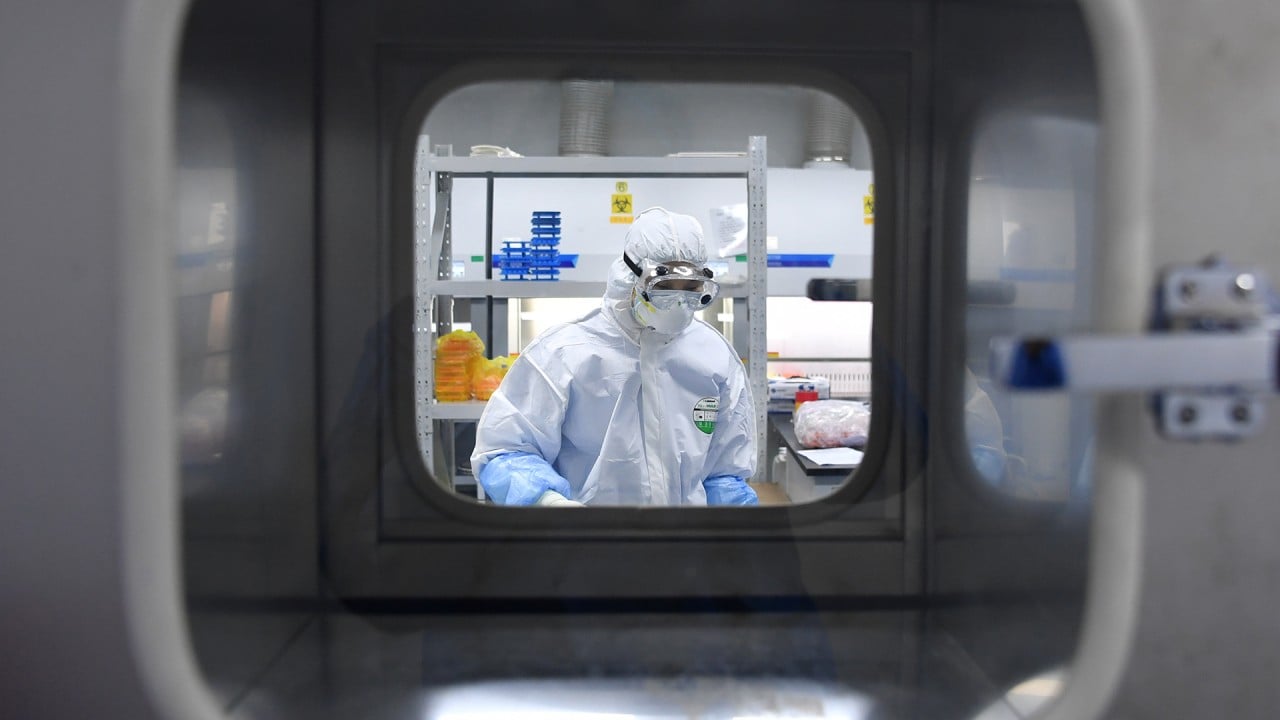
China’s ‘bat woman’ at centre of coronavirus theories says her work helped identify new strain fast
- Shi Zhengli tells state broadcaster that years of research meant cause of mystery pneumonia was quickly found after it emerged in Wuhan last year
- She says she will continue to study unknown pathogens because the ones that have been discovered are ‘just the tip of the iceberg’
Shi Zhengli – dubbed China’s “bat woman” for her research on coronaviruses in the mammals – told state broadcaster CGTN on Monday those studies had “enabled us to understand the cause of the unknown pneumonia in the shortest time” after the first cases emerged in Wuhan late last year.
Days after samples were obtained on December 30, the team sequenced them and isolated the pathogen, believing it to be a new type of coronavirus, said Shi, director of the Centre for Emerging Infectious Diseases at the Chinese Academy of Sciences’ Wuhan Institute of Virology.
They proved the strain they had isolated was causing the mystery illness by conducting experiments on transgenic mice and rhesus monkeys in early February, simulating the pneumonia symptoms experienced by humans with Covid-19, the disease caused by the virus.

Shi said 15 years of research and molecular biology experiments looking at whether coronaviruses carried by bats had the potential to jump species had given them the experience and technical solutions needed when the outbreak began.
“For example, our nucleic acid and antibody detection methods, and the virus isolation technologies – all of these took a lot of time to fully explore [but gave us the ability to] identify the pathogen once we had a sample,” she said.
Coronavirus: bat scientist’s cave exploits offer hope to beat virus ‘sneakier than Sars’
Shi has spent years researching bat coronaviruses at her lab at the institute. After searching caves around the country for samples, Shi and her team identified the natural bat reservoir for the severe acute respiratory syndrome (Sars) pathogen that spread in southern China from 2002 to 2003.

02:08
China says no evidence to suggest coronavirus virus came from Wuhan’s lab
The origin of the new coronavirus, Sars-CoV-2, remains unknown – scientists believe it most likely spread to humans from animals, perhaps a bat. But given the Wuhan location of her high-security laboratory, which handles the most deadly pathogens, Shi found herself at the centre of conspiracy theories that the new virus had been engineered, or that it had escaped from the lab.
As the virus spread around the world, the theories swirled online before US President Donald Trump and Secretary of State Mike Pompeo both claimed there was evidence the pathogen had come from the Wuhan institute, without providing any evidence. The institute has repeatedly denied such claims, and Beijing has said finding the origin of the virus was a scientific issue and accused the US of politicising the pandemic.

00:52
WHO says coronavirus is of natural origin and ‘will be with us for a long time’
Wang Yanyi, director of the Wuhan Institute of Virology, appeared on CGTN on Sunday, saying the lab held just three live coronavirus strains from bats, and their highest similarity to Sars-CoV-2 was only 79.8 per cent.
Some of the speculation around the institute is based on an article by Shi’s team about a new bat coronavirus that was published in Nature in 2018. But Wang said that virus was only 50 per cent similar to Sars-CoV-2.
A paper published in Nature in February said another novel bat coronavirus, named RaTG-13, shared about 96.2 per cent genomic similarity with Sars-CoV-2. Wang told the broadcaster that a 3.8 per cent difference was significant, and it would take a long time for a virus to evolve and mutate to that extent. She added that Shi’s team had not isolated RaTG-13 because they were focused on finding the origin of Sars, so they had only looked at bat coronaviruses that were similar to Sars.
Responding to the accusations against her lab and work, Shi said it was “regrettable” to mix science with politics, and called for joint international efforts on infectious disease research to achieve “mutual benefits”.
“The work in the lab, collecting samples in the field and setting up early warning models needs scientists from different fields with different experience,” she said. “One small team can’t do this sort of work alone.”
Chinese virologist at centre of ‘coronavirus came from a laboratory’ claim denies defecting
Shi said she would continue to study unknown pathogens to help in the battle against future outbreaks because the ones that had been discovered were “just the tip of the iceberg”.
“If we want to protect humans from viruses or avoid a second outbreak of new infectious diseases we must go in advance to learn of these unknown viruses carried by wild animals in nature and then provide early warnings,” Shi said.
“These viruses exist in nature whether you want to admit it or not,” she said. “If we don’t study them, there will possibly be another outbreak and we wouldn’t know about them.”

